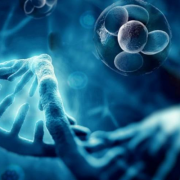Stem cells have been hailed as the future of medicine due to their ability to regenerate damaged or diseased tissues. These cells have the potential to differentiate into various types of cells in the body, making them a valuable tool for treating a wide range of illnesses and injuries.
What are Stem Cells?
Stem cells are undifferentiated cells that have the potential to differentiate into various types of cells in the body. They can be found in different parts of the body, including bone marrow, adipose tissue, and blood vessels.
Stem cells are categorized into main two types: Pluripotent stem cells (PSCs) which include embryonic stem cells (ESCs) and induced pluripotent stem cells (iPSCs) and multipotent stem cells which include adult stem cells.
How can PSCs be obtained?
In the case of ESCs, they are derived from the inner cell mass of a blastocyst, a structure that forms in the early stages of embryonic development. These cells have the ability to differentiate into any type of cell in the body, making them highly valuable for research and therapeutic applications. In recent years, PSCs derived from patients by reprogramming and induction of pluripotency, iPSCs, are a powerful and autologous cell source for regenerative medicine.
Adult stem cells, on the other hand, are found in various tissues and organs throughout the body. These cells have the ability to differentiate into specific cell types, such as blood cells, intestine, skin cells, and liver cells. These cells can be propagated by providing factors which regulate homeostasis and tissue repair in the native tissue.
Uses of Stem Cells in Medicine
Stem cells have shown great promise in treating a wide range of illnesses and injuries. Here are some of the ways stem cells are being used in medicine:
- Regenerative Medicine: Stem cells are being used to regenerate damaged or diseased tissues, such as heart muscle, pancreatic tissue ,liver tissue, and nerve cells. This approach holds great promise for treating conditions like Parkinson's disease, diabetes, and spinal cord injuries.
- Tissue Engineering: Stem cells are being used to create tissues and organs for transplantation. This approach could help alleviate the shortage of donor organs and reduce the risk of rejection.
- Drug Development: Stem cells are being used to test the safety and efficacy of new drugs. By growing specific types of cells in the lab, researchers can study how drugs interact with those cells and identify potential side effects.
Challenges in Stem Cell Research
One of the biggest challenges is ethical concerns surrounding the use of ESCs. Since iPSCs are patient derived, they are an extremely attractive solution to ethical concerns surrounding ESCs.
Another challenge is the risk of tumor formation. Stem cells have the ability to divide and differentiate into various cell types, which can sometimes lead to the formation of tumors. This risk can be minimized through effective differentiation protocols, careful monitoring and testing of stem cell therapies.
Conclusion
Stem cells are a promising area of research that holds great potential for treating a wide range of illnesses and injuries. While there are ethical and safety concerns that need to be addressed, the potential benefits of stem cell research make it an area that should continue to be explored and developed. With continued research and innovation, stem cells could one day revolutionize the way we treat diseases and injuries, and usher in a new era of regenerative medicine.
The other two pillars of regenerative medicine, biomaterials and growth factors, can be further explored in the links below.




